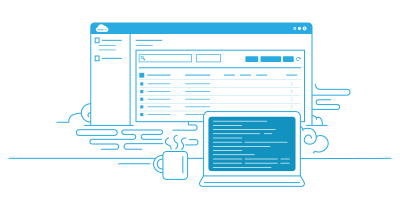Effective monitoring of your Amazon S3 environment is critical for maintaining security, optimizing performance, and ensuring compliance. AWS offers several monitoring tools specifically designed for S3, creating a comprehensive ecosystem for tracking and responding to potential incidents. CloudWatch serves as the foundational monitoring service, allowing you to track metrics and set up alerts when thresholds are exceeded. The standard CloudWatch metrics for S3 are reported daily at no additional cost, providing basic storage data. For more detailed visibility, request metrics can be enabled to monitor S3 operations at one-minute intervals, helping identify operational issues quickly. While CloudWatch provides fundamental metrics, implementing advanced Amazon S3 monitoring strategies can significantly enhance your AWS infrastructure management capabilities.
Essential Amazon S3 Monitoring Components
Implementing these key monitoring practices will strengthen your S3 security posture…
1. Enable Comprehensive Logging
Logging is fundamental for all security best practices. CloudTrail maintains an audit trail of events across your AWS services, capturing management events (creating/deleting buckets) and data events (API calls on objects like GetObject and PutObject).
2. Track Critical Metrics
Leverage CloudWatch to monitor essential S3 metrics including PutRequests, GetRequests, 4xxErrors, and DeleteRequests. These metrics help maintain security, availability, and performance of your S3 resources.
3. Implement S3 Storage Lens
S3 Storage Lens provides organization-wide visibility into your object storage usage and activities. It analyzes metrics to deliver contextual recommendations to optimize storage costs and apply data protection best practices.
4. Configure Server Access Logging
Bucket access logging is a recommended security best practice that assists with compliance standards and identifying unauthorized access. S3 access logs are critical during data breach investigations as they track data access patterns across your buckets.
Advanced Monitoring Strategies
The goal of an AWS monitoring strategy is more than providing dashboards & indicators and to trigger actions. CloudWatch is the core service for event monitoring, analysis, and automated response. Features like anomaly detection can analyze historical data to find predictable patterns.
For more advanced security, consider enabling Amazon GuardDuty for S3. Continuously monitor and profile S3 data access events & configurations to detect suspicious activities, such as requests from unusual geolocations or attempts to discover misconfigured bucket permissions.
Custom Amazon S3 Monitoring Dashboards
To set up a custom S3 monitoring dashboard, navigate to CloudWatch, select Dashboards, select Automatic Dashboard, and choose S3. Then you can select relevant metric types like BucketSizeBytes, NumberOfObjects, and error rates to visualize key performance indicators tailored to your needs.
Integration with Other AWS Services
Define a comprehensive monitoring strategy before implementation. Determine what you want to monitor and why it’s important. Decide which metrics will evaluate your infrastructure’s performance. This ensures you collect meaningful data that drives informed decisions. Consider integrating with additional AWS services. For example, AWS X-Ray enables trace messaging for S3 event notifications. The X-Ray trace map helps visualize connections between S3 and other services your application uses.
Implementing S3 Monitoring: Strategic Benefits for Your AWS Environment
Implementing robust S3 monitoring strategies delivers immediate, measurable benefits across your entire AWS ecosystem. By moving beyond basic CloudWatch metrics to comprehensive monitoring with CloudTrail, GuardDuty, and Storage Lens, you gain real-time visibility into potential security threats while optimizing storage costs. This multi-layered approach transforms raw data into actionable intelligence. Enable automated responses to anomalies before they become critical issues. The return on investment is clear: enhanced security posture, streamlined compliance reporting, reduced operational costs, and improved performance. Most importantly, comprehensive S3 monitoring provides the confidence that your organization’s valuable data assets are protected while maintaining the agility you needin your cloud environment.



Leave A Comment